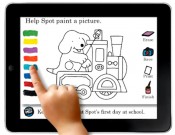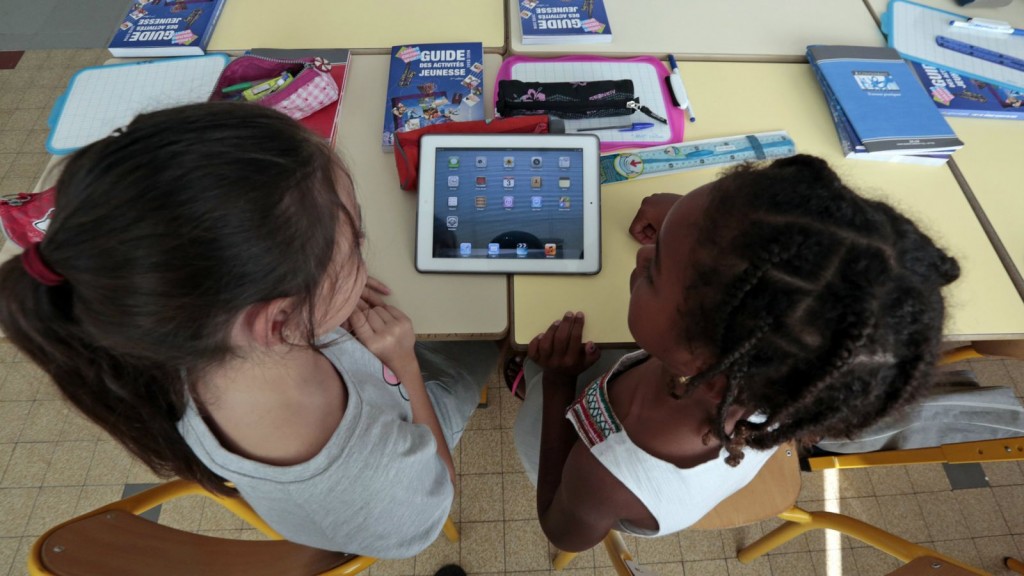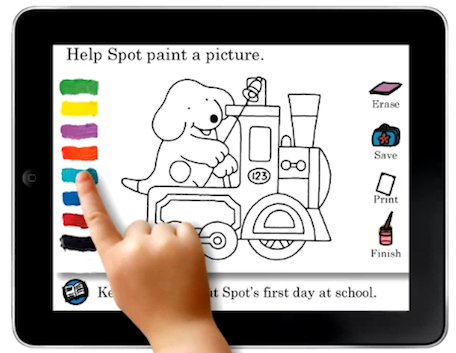Waldorf News
A teacher gave her 8-year-old students iPads and discovered one huge drawback

By Jenny Anderson
When Launa Hall, a teacher in northern Virginia, gave each of her third graders an iPad, they were psyched. Many of them had never had a tablet, and the appeal, was immediate and powerful, she writes in the Washington Post.
Hall didn’t choose to give her students iPads. Her school received money—more than $100,000 per grade—to roll out the one-to-one classroom where there is one computing device per child. She and others wondered whether there was enough research to prove that such a strategy would enhance her students’ learning.
A lot of good things happened with the devices. Her students “made faux commercials that aired on our school’s morning news; they recorded themselves explaining math problems; they produced movies about explorers, complete with soundtracks. I recorded mini-lessons for my students to watch at home, so we could ‘flip our classroom’ and discuss the information in small groups the next day.”
But there was a cost.
Kids stopped conversing with each other as much. Sure, maybe they didn’t argue, or hurt each other’s feelings as much—something that happens a lot on third grade—but that’s because they weren’t engaging with each other as often. She recalls one rainy day when her students came into the classroom after lunch and she pulled out a box of LEGOs, which only a weeks earlier had been cause for celebration. No one wanted to play with them. They wanted their iPads. The classroom went silent. She writes:
“Some adult ears might welcome a room of hushed 8-year-olds, but teachers of young children know that the chatter in a typical elementary classroom is what makes it a good place to learn. Yes, it’s sometimes too loud. These young humans are not great conversationalists. They are often hurting someone’s feelings or getting hurt, misunderstanding or overreacting or completely missing the point. They need time to learn communication skills—how to hold your own and how to get along with others. They need to talk and listen and talk some more at school, both with peers and with adults who can model conversation skills. The iPads subtly undermined that important work. My lively little kids stopped talking and adopted the bent-neck, plugged-in posture of tap, tap, swipe.”

Sherry Turkle, the author of Reclaiming Conversation: The Power of Talk in a Digital Age, observed that older kids are struggling with conversation due to the amount to time they spend connected to devices, and not connected to people.
Hall mapped out which lesson plans work best with technology, even creating parallel tracks for the days the broadband was not fast enough. She applauds the benefits it brings but she asks what research underscores the push for more technology.
The Organization for Economic Cooperation and Development recently released a study on school tech initiatives in more than three dozen countries (though not the United States). It found that “even countries which have invested heavily in information and communication technologies (ICT) for education have seen no noticeable improvement in their performances in PISA results for reading, mathematics or science.”
Hall, whose background is in early childhood development, likes the Campaign for a Commercial-Free Childhood’s recommendations that teachers and parents limit technology for young children. She explained it to Quartz this way:
“A lot of apps—especially for young children—are metaphors for what children would do in the real world. They take real world experiences—building a house—or doing a math problem—and they have them do it on a screen. These kids are young enough that they need to do it in the real world first before the metaphor makes sense.”
Technology is a powerful tool and can no doubt yield results in some classrooms with some teachers and some students. But it is changing quickly and teachers are often not given the support they need to learn what will be effective and what will be distracting. As one commentator on Hall’s article noted, “…digital study isn’t the issue; digital teaching and understanding the tech—is.”
Hall found that she lost a lot of precious teaching time to things like lost passwords, alarms going off, selfies, and slow connections. Those might improve with time and experience, but that time is not easily recaptured.
“This is not a great way forward for our children,” she told Quartz. “There are great things you can do with an iPad. But it’s just such a huge tool that overwhelms the environment.”

 Train to Teach in Seattle
Train to Teach in Seattle Waldorf Training in Australia
Waldorf Training in Australia Great books for Waldorf Teachers & Families
Great books for Waldorf Teachers & Families Everything a Teacher Needs
Everything a Teacher Needs
 Roadmap to Literacy Books & Courses
Roadmap to Literacy Books & Courses Association for a Healing Education
Association for a Healing Education Flexible preparation for your new grade
Flexible preparation for your new grade ~ Ensoul Your World With Color ~
~ Ensoul Your World With Color ~ Space speaks. Its language is movement.
Space speaks. Its language is movement. Quality Education in the Heartland
Quality Education in the Heartland Bringing Love to Learning for a Lifetime
Bringing Love to Learning for a Lifetime The Journey is Everything
The Journey is Everything Immersive Academics and Arts
Immersive Academics and Arts Jamie York Books, Resources, Workshops
Jamie York Books, Resources, Workshops Bay Area Teacher Training
Bay Area Teacher Training Caring for All Stages of Life
Caring for All Stages of Life Waldorf-inspired Homeschool Curriculum
Waldorf-inspired Homeschool Curriculum Full-Time Teacher Education
Full-Time Teacher Education Apply Today: New Cohort Starts Nov. 2025
Apply Today: New Cohort Starts Nov. 2025 Transforming Voices Worldwide
Transforming Voices Worldwide Middle School Science With Roberto Trostli
Middle School Science With Roberto Trostli Summer Programs - Culminating Class Trips
Summer Programs - Culminating Class Trips RSS Feeds
RSS Feeds